Gábo r Bacsmegi is the Director of the Múnkácsy Mihály Museum in Békéscsaba. He is specializes in Neolithic Archaeology and reconstruction of ancient environments.
r Bacsmegi is the Director of the Múnkácsy Mihály Museum in Békéscsaba. He is specializes in Neolithic Archaeology and reconstruction of ancient environments.
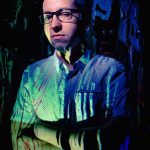 Gustavo Benjumea is a Toronto-based digital media and animation instructor at OCAD and Brock University. He specializes in computer animation, installation, and drawing. His work has been exhibited across Canada and internationally. Webpage: www.gustavocerquera.com
Gustavo Benjumea is a Toronto-based digital media and animation instructor at OCAD and Brock University. He specializes in computer animation, installation, and drawing. His work has been exhibited across Canada and internationally. Webpage: www.gustavocerquera.com
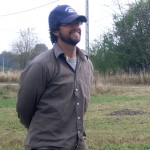 Paul R. Duffy is a Canadian Co-Director, and founder of the BAKOTA project. He is currently a Postdoctoral Scholar at the Christian Albrecht Universität in Kiel, Germany. He is a Research Associate at the Field Museum in Chicago and has lectured on Funerary Archaeology, Landscape Archaeology, and World Archaeology at the University of Toronto and Trent University. Duffy is also an active member of the Körös Regional Archaeology Project and has been training undergraduate students in field archaeology and spatial analysis since 2006.
Paul R. Duffy is a Canadian Co-Director, and founder of the BAKOTA project. He is currently a Postdoctoral Scholar at the Christian Albrecht Universität in Kiel, Germany. He is a Research Associate at the Field Museum in Chicago and has lectured on Funerary Archaeology, Landscape Archaeology, and World Archaeology at the University of Toronto and Trent University. Duffy is also an active member of the Körös Regional Archaeology Project and has been training undergraduate students in field archaeology and spatial analysis since 2006.
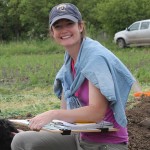 Julia I. Giblin is an American Co-Director of the BAKOTA project and Assistant Professor of Anthropology, Quinnipiac University. Dr. Giblin participated in two NSF-REU Site program as an undergraduate student and has continued to work and train undergraduates in these fields (archaeology and geochemistry) since those initial experiences in 2003 and 2004. She has supervised several undergraduates in archaeological field techniques as part of the Körös Regional Archaeological Project.
Julia I. Giblin is an American Co-Director of the BAKOTA project and Assistant Professor of Anthropology, Quinnipiac University. Dr. Giblin participated in two NSF-REU Site program as an undergraduate student and has continued to work and train undergraduates in these fields (archaeology and geochemistry) since those initial experiences in 2003 and 2004. She has supervised several undergraduates in archaeological field techniques as part of the Körös Regional Archaeological Project.
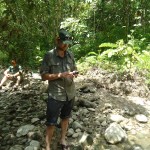 Mark Golitko is an Assistant Professor in the department of anthropology at the University of Notre Dame as well as a Research Associate at the Field Museum of Natural History. He earned his masters and Ph.D. from the University of Illinois at Chicago. He has published his previous research on the impact of conflict on social structure during the Neolithic period. His current projects including research focused on human response to changes in the environment over time, as well as the BAKOTA project, researching social change in the Middle Bronze Age of Hungary. http://anthropology.nd.edu/faculty-and-staff/faculty-by-alpha/mark-golitko/
Mark Golitko is an Assistant Professor in the department of anthropology at the University of Notre Dame as well as a Research Associate at the Field Museum of Natural History. He earned his masters and Ph.D. from the University of Illinois at Chicago. He has published his previous research on the impact of conflict on social structure during the Neolithic period. His current projects including research focused on human response to changes in the environment over time, as well as the BAKOTA project, researching social change in the Middle Bronze Age of Hungary. http://anthropology.nd.edu/faculty-and-staff/faculty-by-alpha/mark-golitko/
 Attila Gyucha is a Hungarian Co-Director of the BAKOTA project, and a faculty at the University of Georgia, Athens. He is an expert in Hungarian Neolithic, Copper Age, and Iron Age archaeology, and co-director of the Körös Regional Archaeological Project.
Attila Gyucha is a Hungarian Co-Director of the BAKOTA project, and a faculty at the University of Georgia, Athens. He is an expert in Hungarian Neolithic, Copper Age, and Iron Age archaeology, and co-director of the Körös Regional Archaeological Project.
Dorottya Kékeg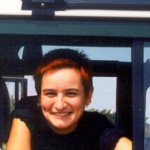 yi is a professional archaeologist and illustrator who has 23 years of experience doing archaeological fieldwork and illustrating artifacts in Europe (specifically Eastern Hungary and Greece). Her work uses ink stippling and digital composition to prepare drawings of artifacts, maps, site plans, and reconstructions for publication.
yi is a professional archaeologist and illustrator who has 23 years of experience doing archaeological fieldwork and illustrating artifacts in Europe (specifically Eastern Hungary and Greece). Her work uses ink stippling and digital composition to prepare drawings of artifacts, maps, site plans, and reconstructions for publication.
Viktoria Kiss 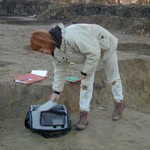 is an archaeologist working as a senior research fellow at the Institute of Archaeology of the Hungarian Academy of Sciences. She studies archaeology, biological anthropology, and cultural anthropology. Much of her research in these fields is focused around the Early and Middle Bronze Ages in Hungary. https://www.researchgate.net/profile/Viktoria_Kiss2/publications
is an archaeologist working as a senior research fellow at the Institute of Archaeology of the Hungarian Academy of Sciences. She studies archaeology, biological anthropology, and cultural anthropology. Much of her research in these fields is focused around the Early and Middle Bronze Ages in Hungary. https://www.researchgate.net/profile/Viktoria_Kiss2/publications
 John Marston is an Assistant Professor of archaeology and anthropology at Boston University. He received his Ph. D. from the University of California, Los Angeles. He is an environmental archaeologist researching the decision-making process of people regarding use of land in dynamic economic, social, and environmental contexts. He is currently involved in projects at sites in both Turkey and Israel including the Bronze Age, Iron Age, and Bronze Age-Medieval sites. http://www.bu.edu/archaeology/profile/marston/
John Marston is an Assistant Professor of archaeology and anthropology at Boston University. He received his Ph. D. from the University of California, Los Angeles. He is an environmental archaeologist researching the decision-making process of people regarding use of land in dynamic economic, social, and environmental contexts. He is currently involved in projects at sites in both Turkey and Israel including the Bronze Age, Iron Age, and Bronze Age-Medieval sites. http://www.bu.edu/archaeology/profile/marston/
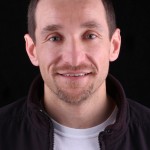 Lászó Paja is a Hungarian Co-Director of the BAKOTA project, a physical anthropologist, Research Associate and lecturer at the University of Szeged. He works as a secondary school science teacher in Szeged, teaching biology, geography and environmental studies.
Lászó Paja is a Hungarian Co-Director of the BAKOTA project, a physical anthropologist, Research Associate and lecturer at the University of Szeged. He works as a secondary school science teacher in Szeged, teaching biology, geography and environmental studies.
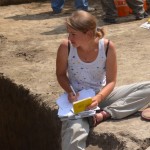 Györgyi Parditka is a Hungarian Co-Director of the BAKOTA project and a PhD student in Anthropological Archaeology at the University of Michigan. Before beginning doctoral studies, she worked as a Field Survey Leader and Collections Manager at the National Heritage Protection Centre (Hungarian National Museum). She has taught both Hungarian and American students in field methods and mortuary archaeology as part of the BAKOTA research project.
Györgyi Parditka is a Hungarian Co-Director of the BAKOTA project and a PhD student in Anthropological Archaeology at the University of Michigan. Before beginning doctoral studies, she worked as a Field Survey Leader and Collections Manager at the National Heritage Protection Centre (Hungarian National Museum). She has taught both Hungarian and American students in field methods and mortuary archaeology as part of the BAKOTA research project.
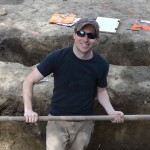 Timothy Parsons is Deputy State Historic Preservation Officer at the Florida Bureau of Archaeological Research, Compliance Review. He is also an expert in human migration, ceramic petrography, and the Hungarian Copper Age.
Timothy Parsons is Deputy State Historic Preservation Officer at the Florida Bureau of Archaeological Research, Compliance Review. He is also an expert in human migration, ceramic petrography, and the Hungarian Copper Age.
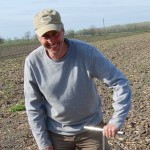 Rod Salisbury is a lecturer at the Comenius University in Bratislava. He is an expert in archaeological soil chemistry.
Rod Salisbury is a lecturer at the Comenius University in Bratislava. He is an expert in archaeological soil chemistry.
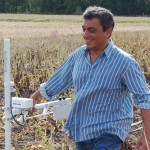 Apostolos Sarris is a geophysicist a the University of Cyprus. He has led seminars in geoarchaeology and remote sensing at REU sponsored archaeological fieldschools in Cyprus and Hungary.
Apostolos Sarris is a geophysicist a the University of Cyprus. He has led seminars in geoarchaeology and remote sensing at REU sponsored archaeological fieldschools in Cyprus and Hungary.
Jamie Ullinger 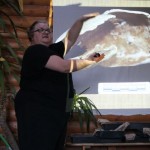 is a Professor of anthropology at Quinnipiac University who received her masters from Arizona State University and PhD from Ohio State University. She specializes in bioarchaeology and looks at health, genetic relatedness, and mortuary practices in past populations. Her current research is focused on the Bronze and Iron Ages in the Middle East and how humans responded to urbanization.
is a Professor of anthropology at Quinnipiac University who received her masters from Arizona State University and PhD from Ohio State University. She specializes in bioarchaeology and looks at health, genetic relatedness, and mortuary practices in past populations. Her current research is focused on the Bronze and Iron Ages in the Middle East and how humans responded to urbanization.
